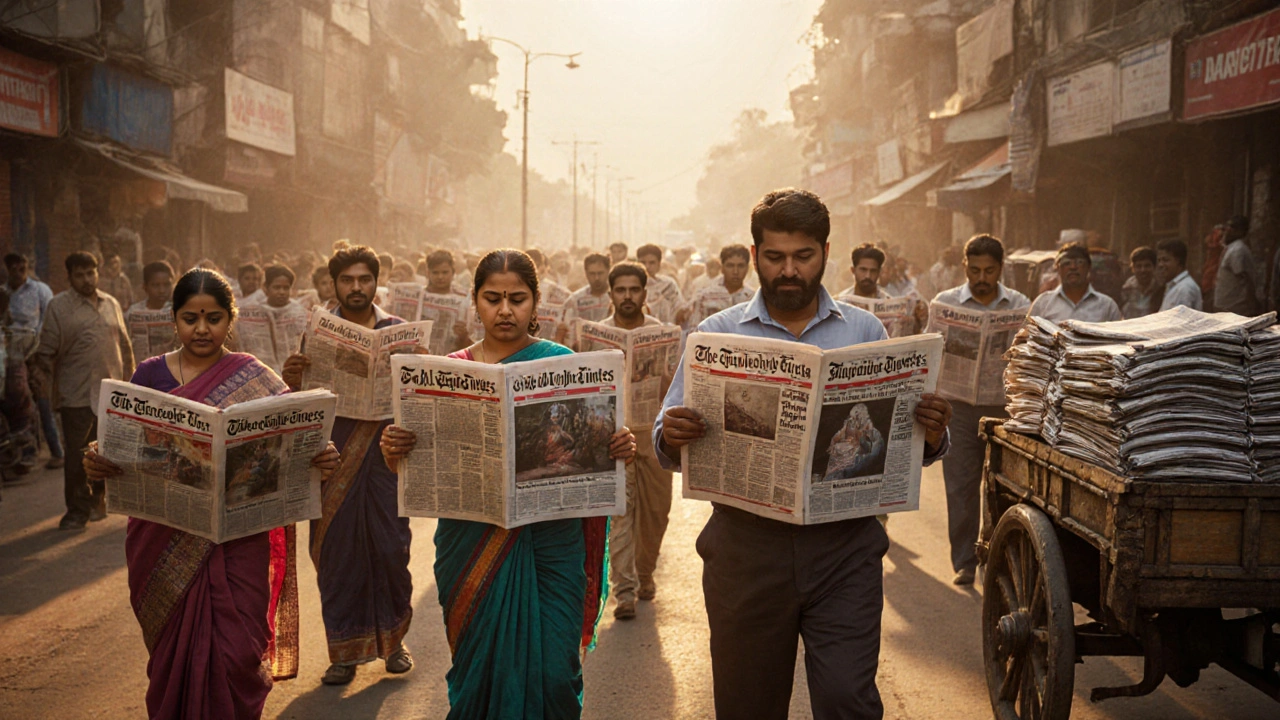Daily Newspaper: What They Are, Why They Matter, and Who Still Reads Them
A daily newspaper, a printed or digital publication that delivers news and information to the public on a daily basis. Also known as print news, it was once the main way people learned what was happening in their city, country, and world. In London, you’d find them on doorsteps, in tube stations, and on café tables—each page a snapshot of the day’s politics, crime, weather, and human stories. But now? Many are gone. The daily newspaper isn’t dead, but it’s changed—and understanding how helps you make sense of the news you actually get.
It’s not just about paper and ink. A daily newspaper, a printed or digital publication that delivers news and information to the public on a daily basis. Also known as print news, it was once the main way people learned what was happening in their city, country, and world. has always carried bias, whether it’s the Daily Mail, a British tabloid known for its right-wing editorial stance and sensational headlines pushing nationalist views, or the Guardian, a UK-based newspaper owned by a nonprofit trust to ensure editorial independence focusing on social justice and climate policy. These aren’t just different papers—they’re different worldviews, packaged daily. And while digital news moves faster, the structure of a daily newspaper—editorial lines, fact-checking teams, local correspondents—still shapes how stories are framed. Even when you read online, you’re often seeing the same angles first printed in a paper.
Local papers have vanished across Greater London. Without them, there’s less accountability for council decisions, fewer reports on school closures, and no one covering the slow decline of a neighborhood pub. That’s why stories about the print media decline, the collapse of revenue, trust, and readership that led to the near extinction of local newspapers matter. When the Daily Express reports on pensions or the BBC publishes a deep dive on NHS waiting lists, they’re carrying forward a tradition: the idea that someone is watching, checking, and telling you what’s real. Not just what’s trending.
Today’s daily newspaper isn’t what it was in the 1980s. But if you want to understand why UK politics feels so divided, why housing feels unaffordable, or why people still argue about the BBC’s bias—you need to know where those ideas came from. The headlines you see online? Many started on a pressroom floor, typed by someone who still believes in the weight of a printed word. What’s left of the daily newspaper isn’t just history. It’s the quiet foundation beneath the noise. Below, you’ll find real stories that show exactly how it’s all falling apart—and who’s still trying to hold it together.
What is the most read newspaper in the world?
The Times of India is the most read newspaper in the world, with over 3.3 million daily print copies. It leads globally due to its affordability, wide reach across India, and deep cultural integration - far ahead of Western papers like The New York Times.
